Understanding Terracotta Roof Tiles
What are terracotta roof tiles?
Terracotta roof tiles are a widely used, durable, and a high-quality roofing option that are common in Europe and Asia. They are known for their signature red color and are highly sought after for their aesthetic appeal.
Terracotta tiles are considered a premium roofing tile and come in many colours. They were a prominent feature of many homes in Australia, including Federation Queen Anne-style homes, Spanish Mission homes, and California Bungalow-style homes.
Today, terracotta roof tiles are still popular. Modern tile shapes and new roofing materials such as concrete contributed to many changes you see now.
What materials are terracotta roof tiles made from?
Terracotta roof tiles feature unglazed or glazed clay ceramic. The clay gives it its colour, although the tiles can vary in tones from cream to burnt orange and darker. Depending on the clays included, you can get different results.
Ceramic roof tile is incredibly durable compared to concrete roof tiles. Although durable by themselves, the tile’s weight load is much larger together. However, significant force on terracotta tiles may break them.
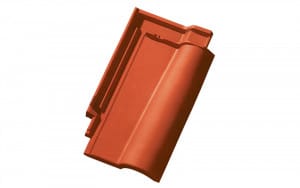
How long do terracotta roof tiles last?
Baking terracotta tiles in a kiln creates extreme durability, allowing them to last around 50 to 75 years. With regular maintenance, they can last even longer. In Europe, many historical buildings still have traditional terracotta roofs.
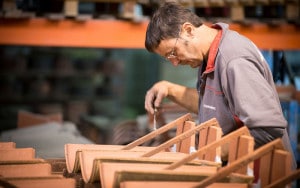
These tiles absorb some moisture, but not enough to degrade the quality. As time passes, freezing water in the tiles contributes to the damage. Your tiles will remain strong for years before they show wear and tear.
What shapes are terracotta roof tiles?
Tiles come in several different shapes to match different architectural styles. Plain clay tiles are rectangular or square and ideal for Southern European-style architecture. Peg tiles are plain tiles with tiny holes to make securing them more manageable, but their smaller size makes them less suitable for large projects.
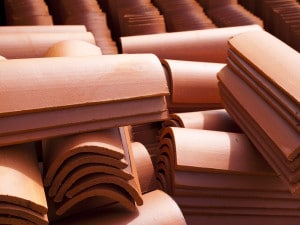
Tiles with terracotta ornaments or unique patterned edges add to your roof’s aesthetic. Arched terracotta tiles, called camber tiles, come in single and double-arch styles and give your roof a wave-like appearance.
What is the minimum roof slope for terracotta tiles?
Whether your roof is compatible depends on the tile’s design and where you live. Depending on the style of tile you want to use, your roof’s angle might be suitable for a terracotta tile installation. If your area receives considerable snow, you’ll need a higher roof pitch to prevent snow from freezing under tiles, this of course is generally not an issue in Australia.
Roofs with a 20-degree pitch or higher are suitable for interlocking tiles, while slate shingles are compatible with high slope roofs.
Benefitting from Terracotta Roof Tiles
Terracotta roof tiles can breathe life into your property. Keep reading for more Terracotta roof tiles FAQ.
What are the advantages of terracotta roof tiles?
Safety, curb appeal, and value are among the most significant advantages of terracotta roof tiles. These tiles are significantly stronger than cement – they can withstand strong winds, block out loud sounds, and are corrosion-resistant.
Clay tiles look great with different architecture, house colours, and landscapes. The timeless roofing style is an attractive asset to your property that can also increase the value of your home. While terracotta tiles are eye-catching, their functionality is even better.
Terracotta tiles are ideal for temperature control in extremely high and low-temperature climates. They provide better insulation than concrete and other roofing materials.
Are terracotta tiles energy-efficient?
Terracotta tiles provide energy-efficient benefits to homeowners thanks to their dense construction. Tiles keep heat in during the day and release energy as weather changes cool the clay. Homeowners stay warmer in winter without increasing heating bills.
Despite their passive temperature control properties, the best way to make terracotta tiles energy-efficient is to use proper insulation. When combined with the tiles, insulation is more effective and keeps your home from getting too hot while still maintaining a comfortable indoor temperature.
Can I use terracotta tiles for my home?
While many homeowners can use terracotta tiles as their roofing solution, the tiles’ heavier weight can be detrimental to a house that can’t support it. Your chances are decent, considering the popularity of terracotta tiles in Australian architecture. A professional roofer can help you decide if terracotta tiles are suitable for you.
Terracotta tiles must not surpass your home’s load capacity. Speaking to a roofing service will give you the necessary information for choosing your roofing material. A roofing inspector can evaluate your situation and determine whether your house can support terracotta tiles.
How do I keep terracotta tiles on my roof during high winds?
Residents in windy coastal areas or locations prone to severe storms don’t have to worry about their tiles getting damaged from the wind. Interlocking terracotta tiles create a secure barrier and clip to framing for added security. You can use roofing clips to keep tiles secure during high winds.
Additionally, roofers use a pointing compound to seal cracks around tiles, holding tiles to ridge capping securely. Pointing materials are flexible enough to create stability without breaking against the wind’s extreme force.
Are terracotta roof tiles fire-resistant?
With Australia’s proneness to bushfires, roofs must pass testing for flame retardance. Clay ceramic tiles are certified fire-resistant. Thanks to their thick, non-combustible material, your home will remain safe from bushfires.
However, some styles of roofing tiles are much more resistant than others. Interlocking tiles create a protective barrier to keep embers from burning the underlying layers. Thanks to their flat design that sits flush against a roof’s bedding, plain, flat tiles are most effective.
Caring for Terracotta Roof Tiles
How often do terracotta roof tiles need maintenance? While a tiled roof lasts many years, maintenance is necessary to keep its life long. Roofs are prone to collecting debris along their slopes, while gutters filled with sludge and leaves refuse to drain and can overflow, wreaking havoc on lower tiles. During dry seasons, this debris can be a fire hazard.
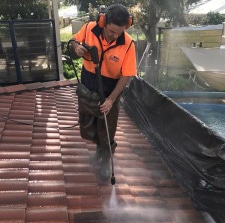
Combatting these issues is as simple as clearing your drainage areas and brushing off roof tiles. A yearly or semi-yearly cleaning will be sufficient to remove blockages. Inspecting your roof every few months will help keep you aware of any problems from the weather.
Professional inspections are also helpful for extending your roof’s life. Professional roof inspectors have the education and experience to identify various roofing problems.
Can you walk on a terracotta roof?
It’s possible to walk on terracotta roof tiles, but that doesn’t mean you should. While inspections and maintenance may require you to get on the roof, excessive weight can crack and break tiles. It’s not uncommon for larger people to fall through a tile roof compared to sheets of asphalt roofing or shingles.
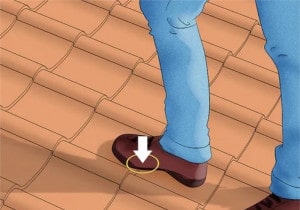
When it comes to maintenance, your best bet is to use a tall ladder. Unstable tiles plus a sloping roof create room for a disaster. If walking on your roof is unavoidable, spreading your weight over a larger area and stepping on the bottom of the tile will prevent tiles from breaking as you walk.
Can you paint terracotta tiles?
You can paint terracotta tiles, but it is very important to use the correct primer and paint to avoid substandard results. Glazed ceramic tiles are paintable as new primer has become available allowing professional roofing companies to guarantee their paint will properly adhere to the glaze.
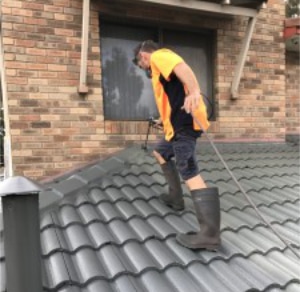
How do I tell if my terracotta roof has a leak?
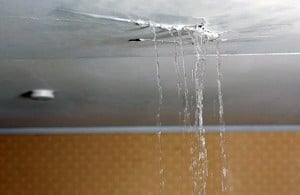
Most signs of a leaky tile roof will be obvious. If you see water dripping from your ceiling, you have a leak. Other signs of leaks include ceiling stains, mould, damaged tiles, displaced tiles, and broken mortar.
Blocked drainage systems are prime causes of tile roof leaks. Keeping gutters, drain pipes, and other debris collectors clean will prevent water from collecting on your roof.
A professional roofing service such as Fremantle Roofing Service can identify and resolve tile roof leaks. Roofing experts have the advanced tools to help.
Will my terracotta roof tiles fade?
Terracotta roof tiles won’t fade regardless of the type you have. The porous surface of unglazed tiles can
last for years in the sun before it begins to fade. Thanks to the kiln-firing method, terracotta tiles have colour baked into them, making them completely fade-resistant.
Australian residents looking for light-coloured terracotta tiles can choose from various tones. Your roofing company will help you find a tile that matches your home’s aesthetic.
Terracotta roof tiles are a practical and gorgeous way to protect your roof. When you need roof restoration professionals in Perth, choose Fremantle Roofing Services for all your terracotta roof tile needs. Contact us at 0400 854 758 to learn more about terracotta roof tiles FAQ.

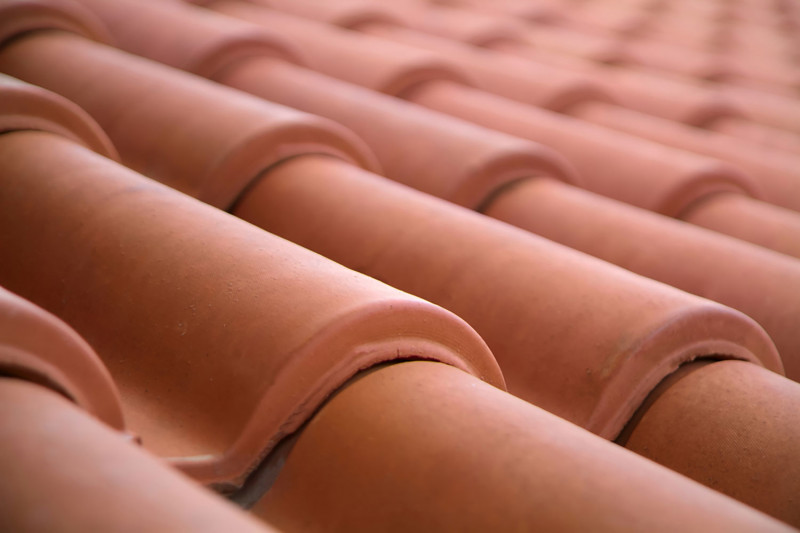
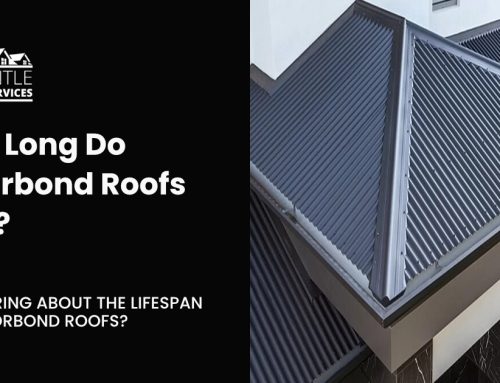

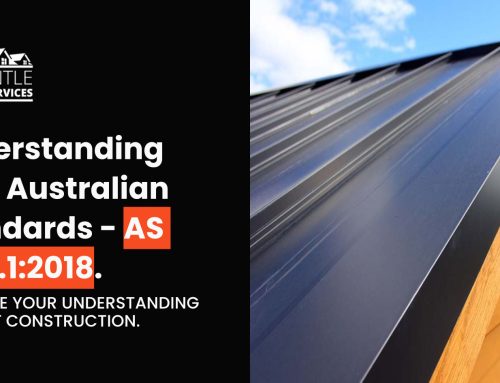
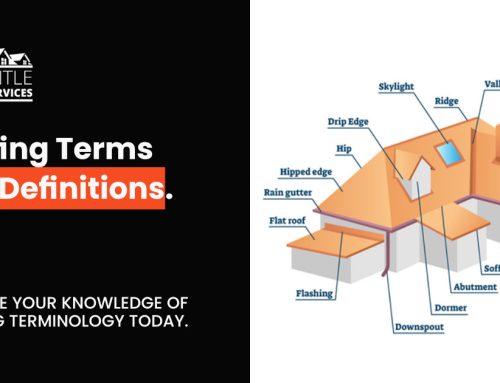
Leave A Comment